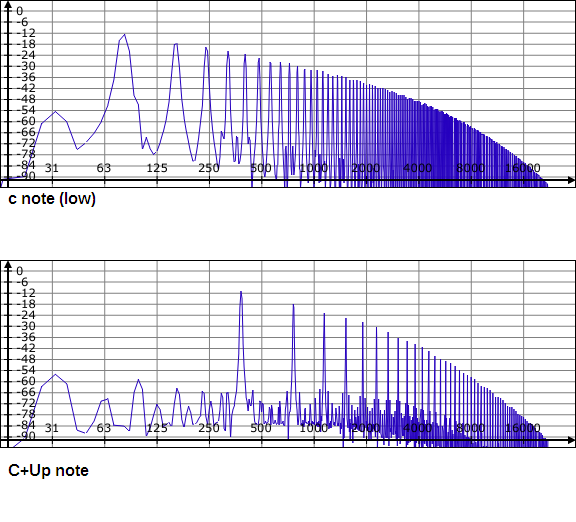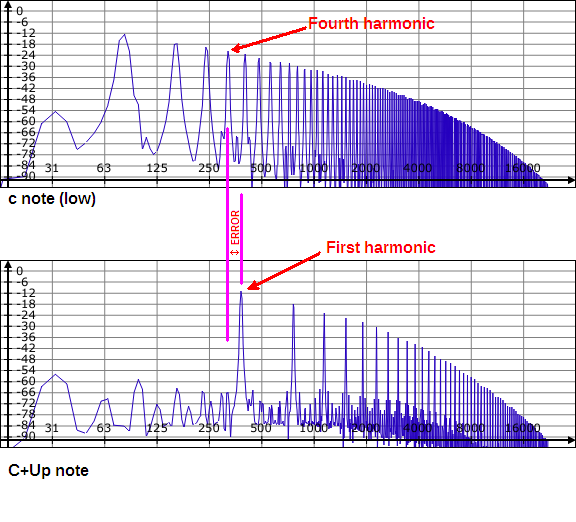AS_x0x_tune
This is a quick guide on how to tune the VCO of your x0xb0x, TB-303 or equivalent 303 clone.
Before you start
-
It’s a good idea to check if your "5.333V" line is calibrated to 5.333V (using a multimeter in DCV mode). Use TM6 to adjust it.
This is only required if you intend to use the CV Pitch output.
Obviously there are two possible ways, one of them is easy, the other one is hard because it’s "iterative".
The wrong/hard way:
-
Adjust the offset to tune one key to its right frequency
-
Play the key one octave above, aaaand it’s not the right frequency
-
Adjust the scale to make the upper key right.
This messes up the lower octave now. -
Go back to the lower octave key and curse at it, adjust the offset again.
This messes up the upper octave, because the scaling isn’t right. -
Repeat untill the error becomes small or you fall asleep
-
Just Don’t do it the Easy Way™
The Easy Way™:
-
❏ Step1: adjust TM5 untill low-c and high-C are one octave apart (the exact frequency doesn’t matter, as it’ll be fixed in Step 2)
-
❏ Step2: adjust TM4 untill you get the right frequency for an A note against a reference (that’s equivalent to adjusting the TUNE knob on the front)
|
Note
|
Go to Step2 only when you’re done with Step1 |
Tuning with the AS_x0x_Tune tool
as_x0x_tune is a small win32 VST plugin (made with SynthEdit/SE_SDK2) which aims to help with the VCO tuning.
| Download |
AS_x0x_tune.zip (965KiB) |
|
Note
|
The plugin requires a pattern of alternating C and C(UP) notes (that is the upper C key on the keyboard, 3V and 4V). Or you can simply load this pattern: as_x0x_tune_pattern.nsp using c0nb0x’s pattern editor and save it to the x0xb0x. |
Quick (and rough) tuning using just a Spectrum Analyzer
As an alternative way, you can roughly tune your VCO with the help of a Spectrum Analyzer. I’ve tried it with the Signal Analyzer plugin by rs-met, so any similar spectroscope would work.
-
Program a pattern of a c (the lower one) note and transposed-up C (the higher one) note, make those two notes long, like 4 step long each. You should have 2 long C notes, 2 octaves apart.
-
Play this pattern at a slow-ish tempo like 80.
-
Set the CUTOFF/ENVMOD/DECAY to max, and the RESO to zero or low-ish.
-
Set the waveform to Sawtooth (this method relies on looking at the individual harmonics, so you don’t want square wave or any distortion/clipping)
-
adjust the scope in order to see the low harmonics, in my case i used FFT size of 8192 and LOG scale. The scope should be alternating between something that looks like the picture below. If you don’t have enough time to see each note - slow the tempo down even further.

If the individual harmonics aren’t clearly visible (due to the scope) you can try boosting the TUNING knob and TM4 in order to push the VCO into higher frequencies, this will help the scope a bit.
-
❏ Step1: adjust TM5 while watching at the 4th harmonic of the low note and the 1st harmonic of the high note, try to bring them as close as possible to minimize the "error", see the picture below:

-
❏ Step2: set the TUNING knob centered, program a long A note and play it.
Adjust TM4 untill the first harmonic is at roughly 110Hz.
You can also play an A note on another synth as a reference, and tune by ear.